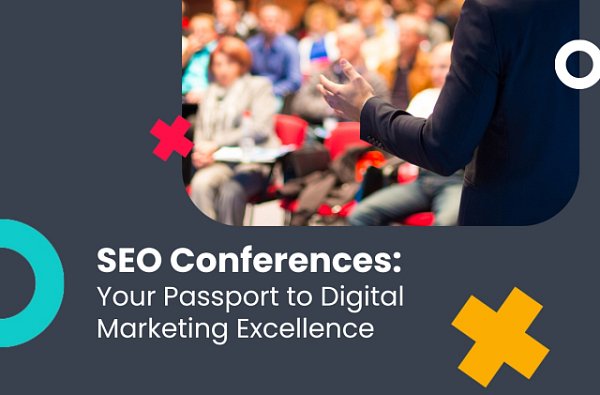(5 min. read)

It’s no secret that link building remains one of the most vital ingredients for SEO success. And for e-commerce businesses, the stakes are even higher. With hundreds or thousands of product pages, fierce competition, and a growing reliance on AI-driven search algorithms, 2025 demands a sophisticated, scalable, and globally-aware link building strategy.
Rethinking Link Building in 2025: Beyond “More Links”
Google’s latest updates have dramatically shifted how relevance and authority are evaluated. Links are still vital — but only when contextual, topically aligned, and earned in a way that signals true brand authority.
Modern link building is not about volume. It’s about velocity, trust, and narrative control.
For e-commerce brands, this means investing in:
- Brand publisher models: Creating high-quality, linkable content assets (e.g. interactive guides, visual data studies).
- Entity SEO: Building topical authority by associating your brand with relevant knowledge graphs.
- Diversified link types: Incorporating product roundups, niche directories, editorial mentions, and unstructured citations.
International Link Building: Scaling Across Borders
As cross-border e-commerce continues its meteoric rise, international link building is no longer optional — it's essential. This is where you need to combine great localization with local-market knowledge in order to succeed.
- Geo-targeted Content Hubs
For international visibility, we recommend launching dedicated content hubs per market. These hubs host culturally localised, SEO-optimised, and PR-friendly content that appeals to both local users and journalists. This needs to dive deeper than just a blog with translated content - you need to create resources geared up for the local market and make sure you’re following the same best practices as you would do in your home country, e.g. creating linkable assets, etc. - Country-Specific Digital PR
Each region has its own media ecosystem. Effective link acquisition in Germany requires different outreach tactics than in the UK or Japan. Work with native speakers or regional PR specialists to pitch to local publications. Companies like WhitePress can help with outreach and content creation in international markets so you can give your audience that local feel. - Multilingual Anchor Strategy
Use hreflang tags effectively and ensure your anchor texts are naturally embedded in the local language, respecting syntax and search intent nuances. Ignoring anchor strategies across borders can lead to cannibalisation or irrelevance in local SERPs, plus having pages linking to wrong languages can really impact UX and how your brand is perceived internationally.
Digital PR for E-Commerce: Moving from Buzz to Backlinks
Digital PR is no longer a luxury channel for e-commerce — it's the cornerstone of authority-driven link building. There are a number of different techniques you can use to modernize your link building campaigns.
- AI-Assisted Campaign Ideation: Use tools like ChatGPT, Jasper, or Frase to brainstorm campaign ideas based on current trends, seasonal peaks, and competitor gaps.
- Data-Led Stories: Journalists love numbers. Scrape internal search data, customer insights, or sales figures to create unique “State of the Industry” angles.
- Visual Assets for Product-Led PR: Interactive lookbooks, AI-generated infographics, and augmented reality product previews are extremely linkable when tied to fashion, home, or tech verticals.
- Trend Hijacking at Scale: Set up real-time alerts (e.g. via Feedly + Zapier + Slack integrations) to spot trending news stories, then pitch expert commentary or product angles within 1–2 hours.
Pro Tip: Include a “PR-ready” media kit on key pages — journalists are more likely to link when image rights and quotes are frictionless.
E-Commerce Specific Link Building Tactics
Not all link building tactics translate well to e-commerce. Here’s what we’ve seen work specifically for online retailers in 2025:
- Product Roundups &
Gift Guides - Build relationships with lifestyle editors and bloggers.
- Automate outreach using AI-generated pitches tailored to product features.
- Offer affiliate incentives, but disclose them to maintain editorial trust.
- Category Page Link Optimization
- Most backlinks go to home or blog pages. Use internal linking and content expansion to direct authority to high-converting category pages.
- Create evergreen guides linked to category pages (e.g. “The Ultimate Guide to Wireless Headphones”).
- Programmatic SEO &
Scalable Content - Use AI tools to create thousands of long-tail FAQ or comparison pages.
- Enrich them with structured data and dynamic widgets (reviews, price trackers) for added link appeal.
AI-Powered Link Building Workflows
With the rise of AI, many SEOs are using it to automate as much of the link building process as possible. Here are some ways that it’s being used:
- Link Prospecting: Custom GPT agents that scrape SERPs, filter by Domain Rating, and assess topical relevance in seconds.
- Email Personalisation at Scale: LLMs trained on journalist bios and previous stories to create hyper-targeted pitches with a 30%+ open rate.
- Content Quality Audits: AI used to pre-screen linkable assets for tone, reading level, and competitive uniqueness before launch.
Invest in technology
Using SEO tools can really help you improve your link building strategies for international markets. Some of my favourite uses include:
- Link gap analysis features which help you see where your competitors are getting links from and you’re not
- Backlink tracking enables you to make sure that your hard-earned links are still there and if not, enable you to reach back out to publishers to ask for them back
There are, however, a couple of SEO tool features you need to be aware of. As with all SEO tools, you need to make sure you’re using your best judgement and not blindly following the advice of a tool.
- Spam link scores - it’s normal for websites to have a number of spammy links and as long as you have more non-spammy links than spammy links, you’re absolutely fine
- Disavowing - unfortunately a lot of the time, disavowing backlinks can do more harm than good especially if you’re not so experienced in dealing with backlinks. For this reason, I always say make sure you check with an expert before disavowing your backlinks in an SEO tool.
In 2025, link building is no longer a siloed tactic — it’s a strategic, cross-functional discipline that sits at the intersection of content, PR, and data science. For e-commerce brands, it represents one of the few remaining defensible advantages in an increasingly AI-dominated search landscape. At WhitePress, we believe in link building that moves the needle — rooted in strategy, aligned with business goals, and built for long-term search visibility.





